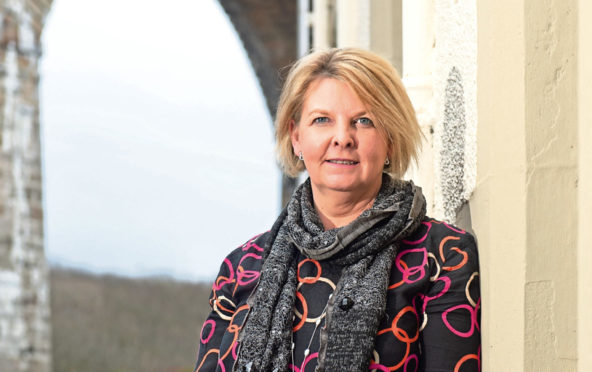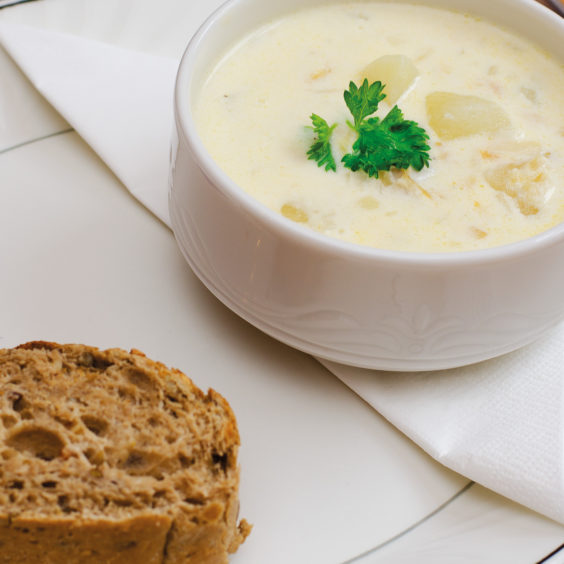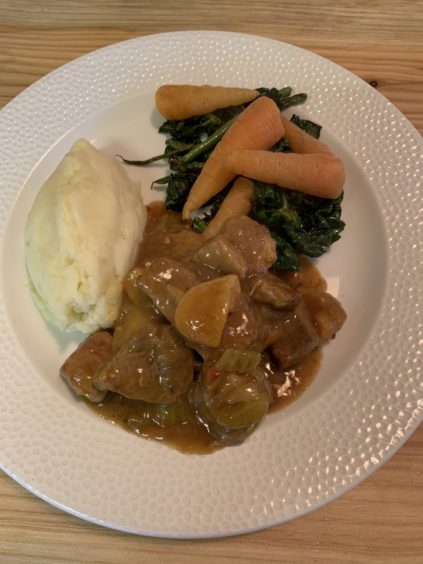This week, Rebecca talks to Caroline Ronald, owner of The Royal Oak Hotel in Cullen, who reveals how the food markets of Spain inspired a passion for seafood which now, fittingly, takes pride of place on her menu along with the much-loved delicacy which hails from the town.
At 52, Caroline Ronald has rooted herself firmly in the coastal town of Cullen, 20 miles east of Elgin, where she owns The Royal Oak Hotel.
Her love of seafood and fresh produce has been prevalent throughout her life, which is why it’s very apt that she has found herself in the home of one of Scotland’s most famous seafood delicacies – Cullen skink.
Here, Caroline talks about the role food has played throughout her life and why she wants to encourage more of us to enjoy seafood.
Childhood – Seafood
Growing up in rural Perthshire, where her parents owned a hotel in the 70s, meant Caroline was in the midst of Scotland’s natural larder and living off the land. But, as she says, much of her appreciation for fresh food came from family trips to Spain during the winter months.
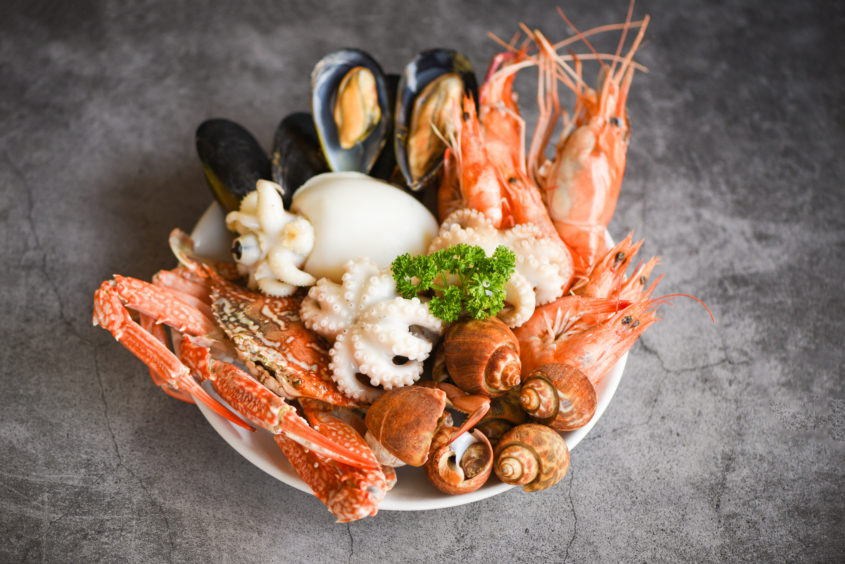
“Both my mother and my grandmother were good cooks. My parents had a hotel, which we used to close every winter for three months. During this time we’d head to Spain so I’ve got vivid memories of the Spanish markets, and their smells too.
“We’d buy fresh produce most days and see things like live chickens and live rabbits in the cages – then they’d take them out and ‘prepare’ them for you there and then.
“Also, very late at night, we would sometimes to go to a place in the Costa Brava to get fish, sardines, from the boats. They would do most of their fishing at night so we’d go down and get fish from the harbour straight after it had been caught, when it was at its freshest.
“They had different species of seafood over there than they have over here, obviously it’s much more Mediterranean. But I think the expereince of travelling to Spain and staying there for three months over the winter as a child is what really gave me the introduction to ‘proper’ food, the kind we all need to be having, and the importance of the origins of food.
“I think I was really aware of this as a child as we always went to these markets – to the source of the food and where we could find the local people selling it, rather than to a supermarket. I feel that experience has influenced my relationship with food all my life.”
Teens – Lamb casserole
As well as Spain’s sea offerings and Perthshire’s produce, Caroline was also exposed to really good-quality and fresh home-cooked food through her grandparents.
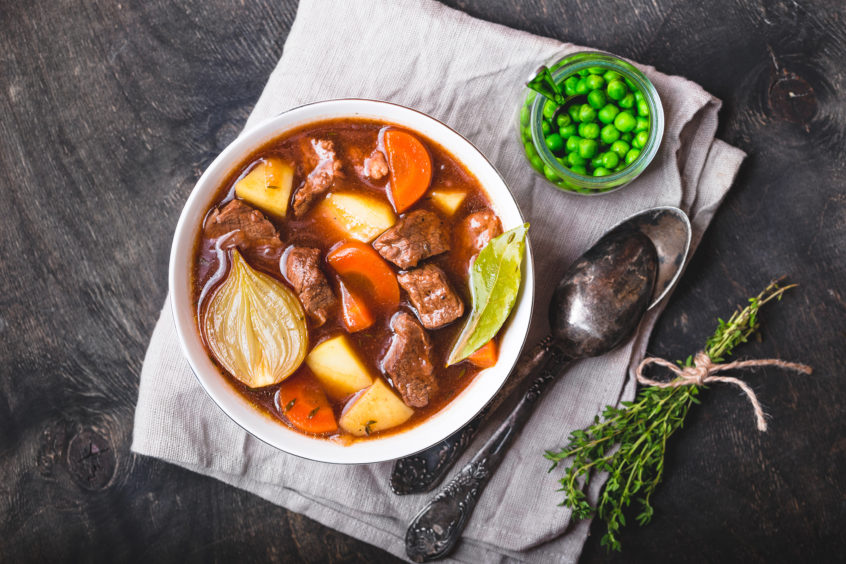
“I spent a lot of my childhood and teenage years with my grandparents on the Isle of Skye. My uncle and my grandparents had a boat so we used to lay creels and go out to get lobsters and crabs, and we’d fish for mackerel, monkfish and sea trout. Then my sister and I would walk along the beach collecting mussels and lympets.
“My family would all get together and we’d have a barbecue on the beach with all these things we’d collected earlier in the day, which was really fun.
“Whenever I visited them, I would help my grandma bake scones and oatcakes in the kitchen and my grandpa would bring the seafood up from the shore to the croft in which they lived and use it to fertilise the potatoes.
“There was always a nice smell of peat as they cut their own peat as well. So we’d often have tatties and mutton in the croft. They also made a lot of lamb casseroles as it was a good way of using much of the local produce.
“My other grandmother was Irish and they had a smallholding as well, so they would make lovely Irish stews.
“It was something my family would just do often, making casseroles and stews, and so I have a lot of memories from my younger years when I make those now.”
20s – Pork and apricot casserole
In her early 20s, Caroline moved to the west coast of Scotland to make the most of her love for fresh and local fare and continue pursuing her passion for food.
“In my 20s, I opened a farm shop near Oban – I was a farmer at the time and was also married to a farmer. We had quite a big farm there with cattle, sheep and pigs.
“I opened the shop in 1995 where we’d sell the beef and lamb from the farm, wild venison and game from estates nearby. We’d also sell free-range pork, eggs and bacon. I used to go out and shoot rabbits as well and make pies out of them to sell in the shop.
“I’ve been surrounded by fresh food and local produce all my life and I’ve never really had to go out and buy much meat so getting it myself has never really phased me. I think my experience of fresh food at the markets from when I was younger also played a big role in me opening the shop in my 20s.
“At that point we were one of the only, and I think one of the first, farm shops in Scotland as they weren’t very common back then.
“I also used to sell my meat at farmers’ markets and I had an outside catering business at this point as well for doing hog roasts. We’d also do a nice pork and apricot casserole at things like weddings.
“I want to choose pork and apricot casserole to represent my 20s as it ties in my love for local food and the farm life well.”
30s and 40s – Seafood bouillabaisse
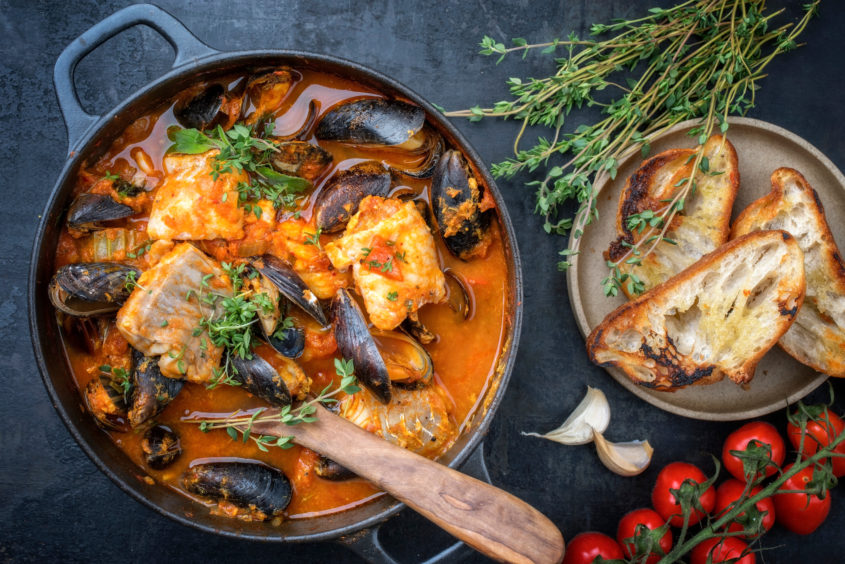
For much of her 30s and 40s Caroline continued with the farm shop and her outdoor catering business mainly centered on pork and hog roast, but her passion for seafood still chimed.
“We also had boats while living out on the west coast and we used to catch a lot of mackerel and I’d make a nice dish that was mackerel stuffed with dill, breadcrumbs and onions and it was delicious. I think anything in which you can cook meat or fish on the bone always has such a nice flavour.
“I never trained as a chef and have just been self-taught with a passion for cooking. I’ve got quite a few chefs who work for me at the moment but I still have a lot of passion for food.
“Bouillabaisse with seafood in it brings back a lot of memories of my mum. She sadly passed away in these decades but she had the hotel when I was younger and then latterly opened one in Florida. She loved cooking and would make bouillabaisse quite often as it was one of her favourites.”
Now – Cullen skink
Having moved to Cullen a couple of years ago, Caroline has made full use of the town’s local delicacy, which seems like a natural move considering her experience with seafood throughout her life.
“I bought the Royal Oak Hotel in Cullen when I was 50. We sell a lot of Cullen skink at the hotel – that’s our main thing – and I even took part in the Cullen Skink World Championships recently and came runner up. I can see myself making that for many years to come.
“I’m also organising a seafood festival for the end of September as I think Cullen would be the best place for it. We’re at the heart of one of the most famous seafood dishes in the world but I don’t think many people know it’s a place too. I think it’s something that should be on everybody’s bucket list.”
Pork and Apricot Casserole
(Serves 4)
Ingredients
- 700g free range pork shoulder, diced
- 1 onion, diced
- 1 celery stick, diced
- 600ml chicken stock
- 100ml orange juice
- ½ tsp cumin
- 2 tsp cornflour
- 150g dried apricots, halved
- Salt and pepper, to season
- 2 tsp olive oil
Method
- Preheat oven to 180C.
- Brown the diced onion and diced celery. Remove from the pan and transfer into a casserole dish.
- Brown the pork shoulder and add to the casserole dish.
- Add chicken stock, 75ml of the orange juice, cumin, salt and pepper and cover with foil.
- Cook in the preheated oven for 1 hr 30 minutes.
- Remove from the oven and add the halved apricots. Mix the cornflour with the remaining orange juice. Place back in the oven for a further 15 minutes.
- Serve with couscous or potatoes and fresh seasonal vegetables.
Read more in this series…
My Memories in Meals: Award-winning chef started his culinary journey with marshmallow surprise
